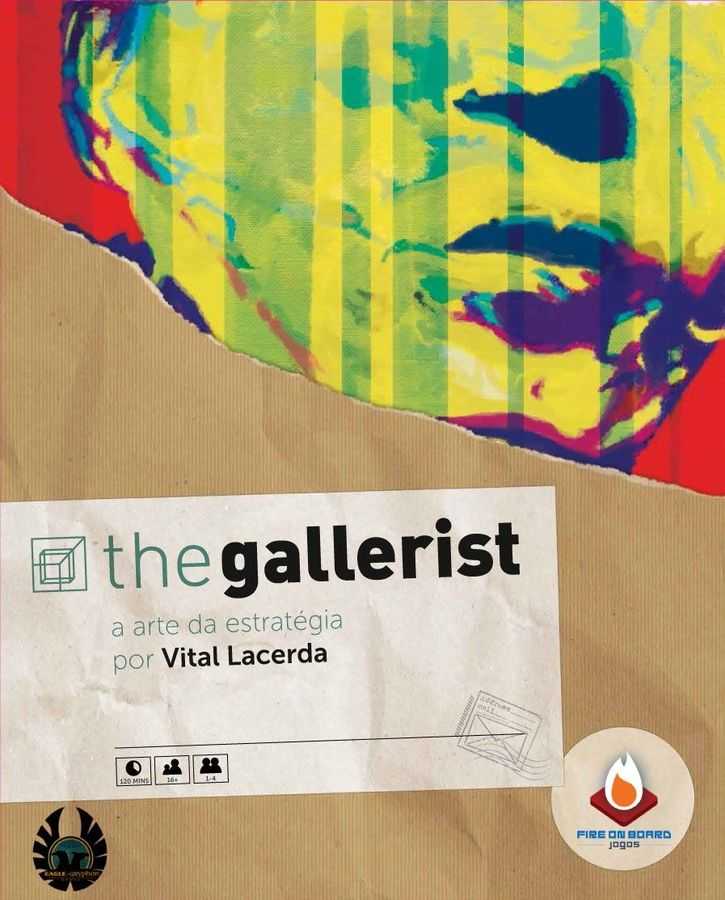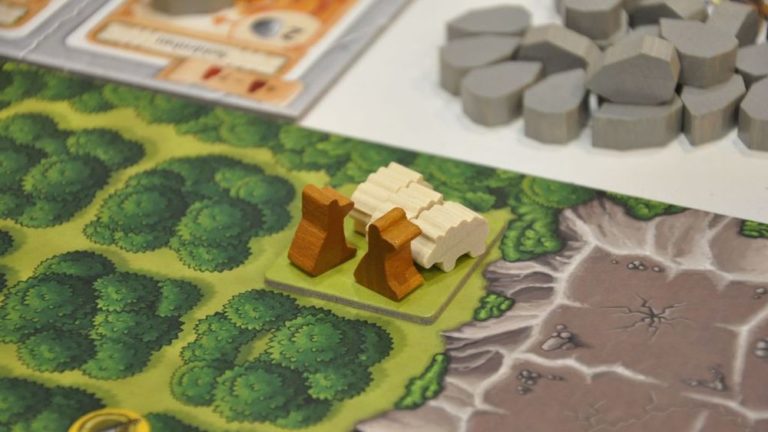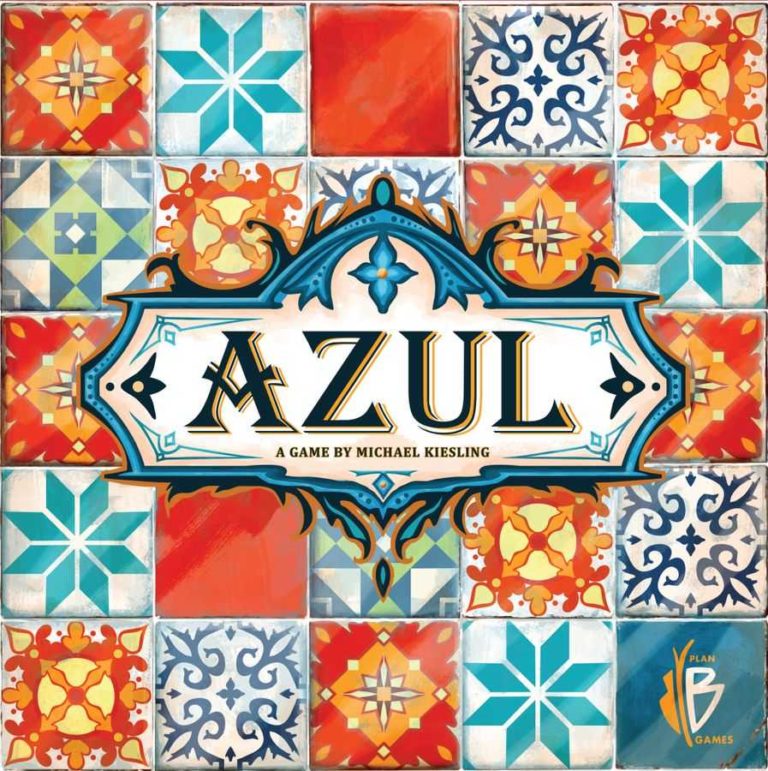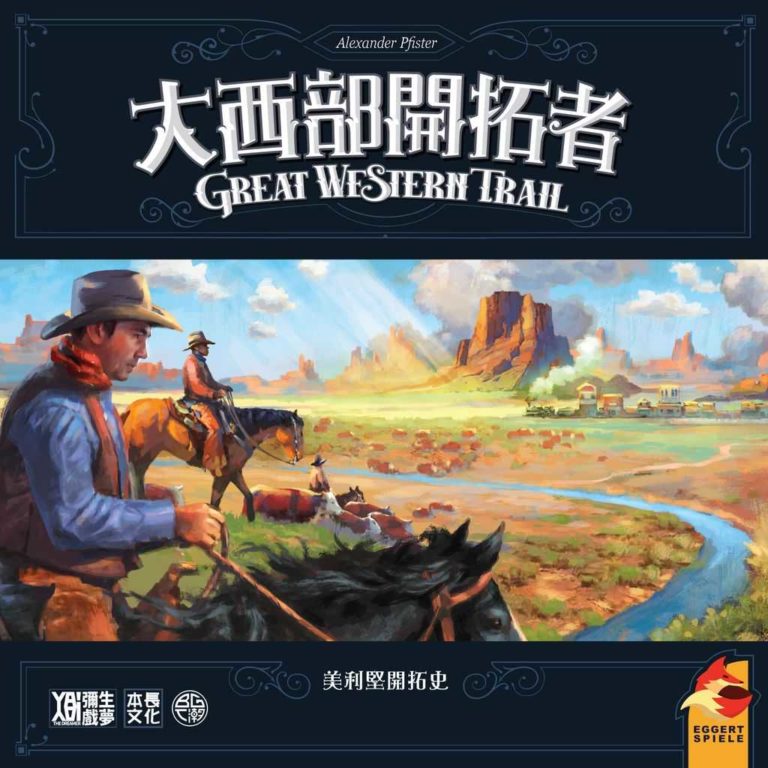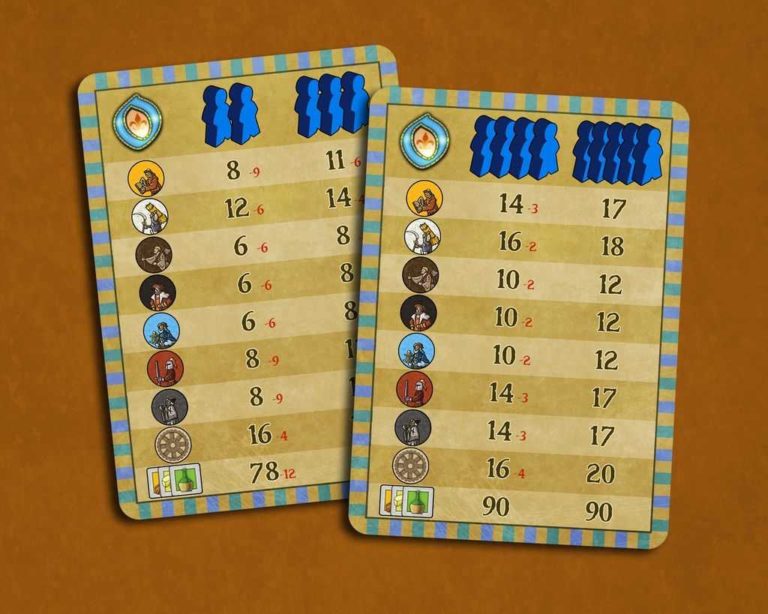The Gallerist Review – A Masterpiece Of Strategy
The Gallerist Review – A Masterpiece Of Strategy
Have you ever imagined what it’s like to run your own art gallery, navigating the exquisite yet cutthroat world of art and commerce? Well, look no further than “The Gallerist.” This board game thrusts you into the glamorous yet challenging role of a gallery owner, where every decision can lead to fame and fortune or plunge you into obscurity. Through this The Gallerist review, I’ll share my awe-inspiring journey into the intricacies of art curation, artist discovery, and gallery management, touching upon those moments that kept me coming back for one more play. It’s a game that melds deep strategy with an engaging theme, promising a unique experience each time you play.
Key Points:
- The Gallerist is a board game that immerses players in the world of art gallery management.
- Players engage in art curation, artist discovery, and gallery management within the game.
- Key components of the game include artist studio tiles, artwork tiles, gallery tiles, visitor meeples, money tokens, and more.
- Unique mechanics of the game include kick-out action, influence track, international market, and dual-layered action selection.
- Strategies revolve around maximizing actions, focusing on artist promotion, and balancing art and commerce.
- The game offers rich experiences in both solo and multiplayer modes, each with its challenges and dynamics.
- The Gallerist stands out for its blend of art theme and economic strategy, offering a refreshing departure from conventional board games.
The beauty of The Gallerist isn’t just in its theme but how it intertwines player actions with the dynamic world of art collection and sales. I remember the first time playing, feeling overwhelmed by the possibilities but intrigued by the depth. This game requires you to think critically, plan strategically, and sometimes take bold risks to outshine your competitors. It captures the essence of the art world’s prestige and pressure, making it a staple in my collection and a game I have eagerly introduced to friends and family alike. Join me as I dive deeper into what makes The Gallerist a masterpiece of strategy.
Diving Into The Artistic Depths of The Gallerist
Embarking on a journey through The Gallerist, you’ll find yourself immersed in a world where art, commerce, and strategy converge. This game is not just about collecting and selling pieces; it’s about becoming a patron, a discoverer, and an influencer in the art world. Seeing your gallery flourish as you navigate through the tantalizing dance of buying low, selling high, and promoting the next big thing in art is an experience like no other. Let’s uncover the essence that lies at the heart of this game.
The Essence of The Gallerist
At its core, The Gallerist is about making the most of your actions to build a successful gallery. But what exactly fuels this journey? First and foremost:

- Discovering and promoting artists: Attracting emerging talents to your gallery and increasing their fame is vital.
- Curating art exhibitions: Carefully select what art to display to captivate both critics and visitors alike.
- Selling artworks: It’s not just about having beautiful pieces; it’s about knowing when to sell them to gain maximum profit.
- Managing your gallery: From hiring assistants to deciding on the next art piece, how you manage your space is crucial.
- Influencing the art market: Your actions can sway the market, making or breaking the value of art pieces.
This fusion of gameplay elements does more than provide an engaging experience; it encapsulates the thrill and complexity of running an art gallery.
The key to success in The Gallerist lies in discovering and promoting artists, curating art exhibitions, selling artworks strategically, managing your gallery effectively, and influencing the art market.
Key Components and Game Materials
The Gallerist comes to life with its meticulously designed components, each adding to the game’s rich atmosphere. Here’s a quick glance at what you’ll find upon unboxing:
| Component | Quantity |
|---|---|
| Artist Studio Tiles | 8 |
| Artwork Tiles | 40 |
| Gallery Tiles | 4 |
| Visitor Meeples (assorted colors) | 60 |
| Money Tokens | Variable |
| Influence Tokens | 40 |
| Fame Points Track | 1 |
| Action Plazas | 4 |
Each piece not only serves a functional purpose but also enhances the visual and thematic depth of the game, creating a truly immersive experience.
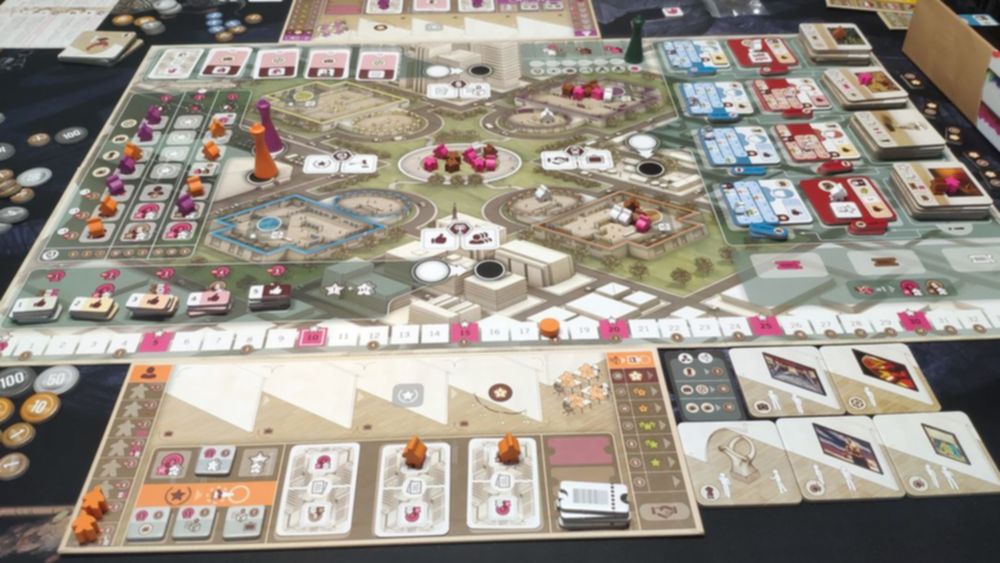
The Unique Mechanics of The Gallerist
Engaging with The Gallerist, you’ll encounter mechanics that set it apart from other strategy board games. Here are a few key points:
- Kick-Out Action: Players can perform actions in spaces occupied by others, providing strategic depth and interaction.
- Influence Track: This vital aspect affects almost every action in the game, from buying art to promoting artists.
- International Market and Auctions: A dynamic marketplace where players can buy and sell art, impacting the game’s economy and artist fame.
- Dual-layered action selection: Each main action has a secondary option, allowing for flexibility and complex decision-making.
These mechanics ensure that no two games are the same, offering endless strategic possibilities and making each playthrough a new adventure.
Engaging with The Gallerist offers unique mechanics like the Kick-Out Action and Influence Track that provide strategic depth and ensure each game is a new adventure.
The Strategic Canvas
Navigating through The Gallerist, strategic planning becomes your paintbrush, with each decision shaping the masterpiece that will be your legacy in the art world. Balancing artistic integrity with commercial success is a delicate act, one that demands foresight, adaptability, and sometimes a touch of audacity. In the upcoming sections, we’ll explore strategies and mechanics in detail, helping you craft your path to becoming the most influential gallerist.

Planning Your Moves – Strategy Tips
Mastering The Gallerist demands a deep understanding of its mechanics and how they interplay. Here are a few strategy tips to guide your journey:
- Maximize each action: Ensure every move contributes to more than one goal. Combining actions for mutual benefit can be key.
- Focus on artist promotion: An artist’s fame can vastly increase the value of their works. Investing in promotion early can pay off.
- Keep an eye on the competition: Understanding your rivals’ strategies can provide opportunities to disrupt their plans or capitalize on their oversights.
Embracing these strategies can transform your gameplay, helping you navigate the challenges of The Gallerist with a confident hand.
Balancing Art and Commerce
Balancing art and commerce in The Gallerist is akin to navigating a narrow bridge over a spectacularly designed garden, where each step forward in the art world requires a cautious glance back at your business investments. This fine balance is what makes the game shine, intertwining the love for beautiful pieces of art with the gritty reality of running a successful gallery.
To thrive, one must:

- Invest smartly in promising artists to secure their artwork while managing gallery expenses.
- Market artworks effectively to increase their fame, making them more valuable for future sales.
- Balance spending on actions that promote art against those that bolster commerce, like attending auctions or hosting exhibitions.
- Choose when to sell an artwork carefully, as selling too early might fetch less money, but holding on for too long risks losing out on peak market prices.
Navigating the balance between art and commerce in The Gallerist requires strategic investments in artists, effective marketing of artworks, and careful decision-making on when to sell to succeed in the game.
The Role of Auctions and Reputation
Auctions and reputation in The Gallerist are not just side activities; they are pivotal in establishing one’s dominance in the art world. The thrill of bidding in auctions for exquisite art pieces or boosting your gallery’s reputation amongst the elite not only propels your standing but also deepens the gameplay, adding layers of strategy that demand attention and precision.
Key points to navigate these aspects successfully include:
- Leverage your gallery’s reputation to attract more visitors and higher-quality art, thus increasing your influence and income.
- Use auctions to acquire rare artworks and strategically sell them for profit or keep them to boost your gallery’s prestige.
- Managing the ebb and flow of your reputation, ensuring it peaks at vital moments to gain the upper hand in auctions and negotiations.
- Remembering that each successful bid or reputation boost also makes you a target for other players, who may seek to undermine your advancements with their actions.
The Gallerist in Solo and Multiplayer Modes
Exploring The Gallerist is a unique journey, whether you’re embarking alone or with friends. The game offers distinct experiences in solo and multiplayer modes, each with its shared depth of strategy but reacting to the presence or absence of other players brings about new challenges and opportunities.
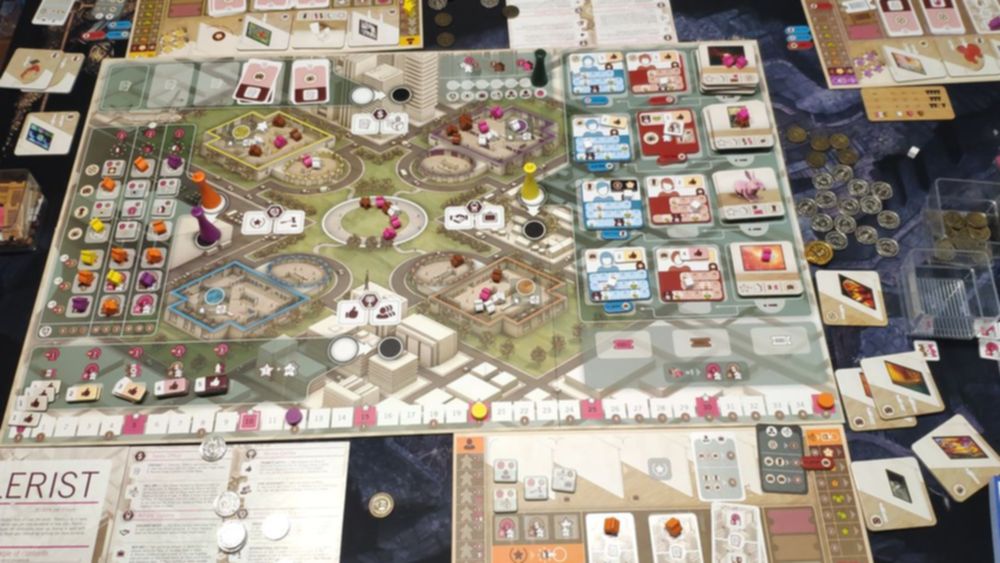
A Solo Masterpiece?
In solo mode, The Gallerist transforms into a personal challenge against the game’s mechanics, pushing players to strategize and enhance their art gallery without the unpredictability of human opponents. This mode is not only a fantastic way to learn and refine your understanding of the game’s actions and art commerce, but it also presents a satisfying puzzle that echoes the multiplayer experience, albeit in a more controlled environment.
Key considerations when playing solo include:
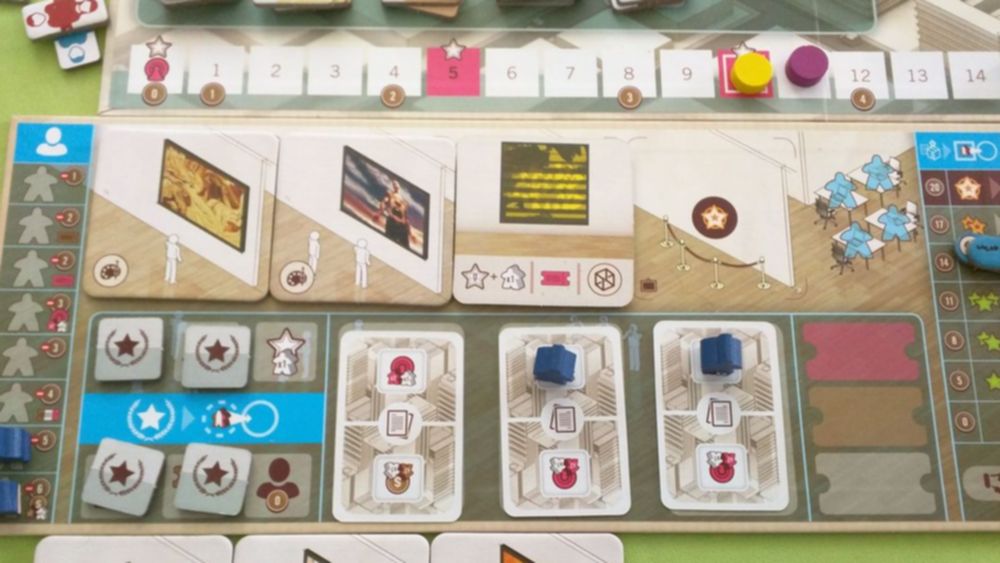
- Prioritizing actions that maximize your gallery’s potential during each turn.
- Efficiently managing your assistants and influence to keep a steady flow of money and art coming into your gallery.
- Adapting your strategy to react to the game’s AI, which simulates competition in acquiring art and enhancing fame.
The Dynamics of Multiplayer Gameplay
Introducing more players into The Gallerist dramatically changes the pace and feel of the game. Suddenly, your well-laid plans can be disrupted by a rival gallerist’s actions, forcing you to adapt and rethink your strategy on the fly.
Multiplayer dynamics introduce:
- The thrill of direct competition for art, artists, and fame.
- Opportunities for strategic partnerships and timing actions to benefit from other players’ moves.
- The challenge of managing more pieces of art and visitors, as they become scarce resources contested by all players.
In multiplayer mode, be prepared for the excitement of direct competition, the strategic benefits of partnerships, and the challenge of managing limited resources effectively in The Gallerist.
Comparing Solo and Multiplayer Experiences
The Gallerist offers rich and compelling experiences across solo and multiplayer modes, each suited to different players’ preferences and situations.
| Aspect | Solo Mode | Multiplayer Mode |
|---|---|---|
| Challenge Level | High, due to optimizing against the game’s mechanics | High, adaptive based on the strategies of opponents |
| Interaction | With the game’s AI and mechanics | Direct interaction and competition with players |
| Strategy Depth | Deep, focusing on mastering actions | Deeper, with added layer of dealing with opponents |
| Game Length | Shorter, as actions are quicker | Longer, due to actions and decisions of players |
| Replayability | High, as you strive to beat your score | Very high, differing strategies and player dynamics |
Both modes offer distinct ways to immerse oneself in the world of art and commerce, challenging players to master the balance between creating a reputable gallery and becoming the most influential gallerist in the competitive art scene.
FAQs
1. What makes The Gallerist stand out from other strategy board games?
What makes The Gallerist stand out is its unique blend of art theme and economic strategy. This game immerses players in the world of gallery management, combining the intricacies of curating an art collection with tactical market manipulation. The depth of its mechanics paired with elegant design offers a refreshing departure from more conventional strategy games.
2. Can The Gallerist be enjoyed by those new to board games?
Yes, The Gallerist can be enjoyed by newcomers to board games, though it may present a steep learning curve at first. Its comprehensive player aids and thematic coherence make it accessible once the basic concepts are grasped. New players who appreciate a challenge and have patience to delve into its mechanisms will find it rewarding.
3. What is the ideal number of players for The Gallerist?
The ideal number of players for The Gallerist is three to four, offering a balanced mix of strategic depth and player interaction. With this player count, the dynamics of the kickout mechanism and auction process are fully realized, enriching the overall gaming experience. However, it remains engaging and competitive even with two players.
4. How long does a typical game of The Gallerist take?
A typical game of The Gallerist takes about two to three hours, depending on the number of players and their familiarity with the game. The initial playthroughs may run longer as players acquaint themselves with the variety of actions and strategic decisions. Subsequent games tend to move more swiftly as players develop more efficient strategies.
Conclusion
Playing The Gallerist is like walking through a beautifully curated art gallery, where each decision reflects your flair for art and business acumen. The intricacies of managing your gallery, attending auctions, and influencing the art market are woven into each action, making every playthrough a distinctive masterpiece. It is a game that not only tests your strategic thinking but also immerses you in the vibrant world of art and artists. Ending on this note, I hope this The Gallerist review has painted a picture vivid enough to tempt you into giving this classic a place on your game shelf. Remember, every game of The Gallerist is a new story waiting to unfold – maybe your gallery will be the next to house a masterpiece. Until next time, keep playing and exploring the wonderful world of board games. Warmly, Lucas.
This article uses material from BoardGameGeek and is licensed under the Creative Commons Attribution-Share Alike License.

